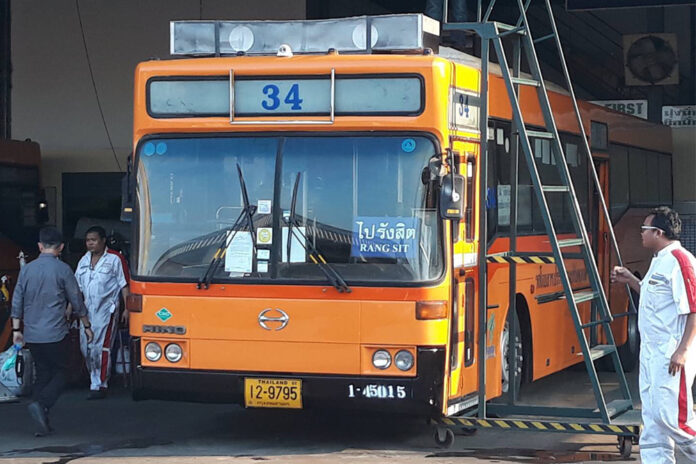
BANGKOK — A transport official on Tuesday said he will go ahead with a plan to install air purifiers on top of public buses to reduce dust pollution in the capital, despite criticism from scientists who call it a pseudoscience.
Bangkok Mass Transit Authority (BMTA) director Surachai Eamvachirasakul said air-filtration system to be installed on the roof of some state-operated buses in Bangkok are capable of removing particulate air pollution and blowing out clear air behind it. He cited several test runs of the system as evidence.
“The device is capable of filtering 10,000 cubic meters of air per one trip,” Surachai said. “Scientific research indicated that an adult would breathe in an average 0.5 cubic meters per hour, so a bus would be able to provide clear air to more than 20,000 people on the road.”
But Chulalongkorn University biologist and social media personality Jessada Denduangboripant said the plan will have a near-zero impact on the PM2.5 dust particles shrouding the capital.
“This is a hoax like the GT200,” Jessada wrote online, referring to fraudulent bomb detectors that were deployed in the three southern border provinces. “If it is working as claimed, I believe it will only be capable of cleansing just a pixel of Bangkok.”
Another scientist said any impact from the scheme would be trivial at best, given the amount of air in the capital city against what the machines could process.
“Based on the area of Bangkok and the height of dust particles from the ground, it gives out 1.568E+12 cubic meters of air that needed to be filtered,” Matipon Tangmatitham, a researcher at the National Astronomical Research Institute of Thailand, wrote online. “But the scheme would only produce 20,000 cubic meters of clean air, even when all the 500 buses are on the road.”
But BMTA director Surachai hit back at the scientists with a test result he gathered, which compares PM2.5 level before entering the device at 48-52 AQI with 1-5 AQI after passing through the device.
“The device doesn’t require electricity since air will flow through it as the bus moves,” Surachai said. “The same idea has been used in Southampton, U.K. and New Delhi, India before.”
The project in Southampton was said to target PM10, which is larger in size than PM2.5, while a similar experiment in New Delhi reportedly failed to achieve desirable outcomes.
If the idea is successful, the device will be installed on 500 BMTA-operated buses, he said. The operator did not mention the cost of each system, but said it is built from “off-the-shelf materials.”
















































